

Go to previous article

Go to next article
Are you listening
to your plants?
1
Autonomous growing could shape the future of horticulture
2
An effective and sustainable alternative to manual weeding
3
Repotting... without actually repotting?
4
Automation and robotization are irreversible trends
5
Tomorrow's nursery starts here! Stay ahead of the curve and receive the latest news on horticultural innovations in your mailbox.
Newsletter

subscribe




The ornamental greenhouse sector is witnessing a transformative shift with the rise of autonomous growing techniques
The future at
your doorstep
High-tech and down-to-earth developments to take your nursery into the future today
Click on the titles below to navigate directly to the topic or scroll down.
In this article we explore promising high-tech developments like biosensors and autonomous growing, as well as down-to-earth, sustainable options that can help take your nursery into the future, today.
Technology will continue to reshape the way plants are grown: today’s experts agree that automation and robotization are irreversible trends. Whilst these potentially game-changing technologies are indeed on the rise, there are also less futuristic solutions available that can make a positive impact on your business and the environment.
Technology and innovation are inherent to cultivation. The past decades saw the widespread adoption of revolutionary solutions, such as potting machines, mechanized greenhouse climate systems, controlled-release fertilizers, and precision irrigation systems.
Wojciech Górka, a nurseryman by education and a passionate journalist who has dedicated over 25 years to observing and describing the green business, offers valuable insights into the latest trends in the nursery industry.
Automation and robotization are irreversible trends
Increasing market demands
According to Górka's observations, ornamental nurseries are currently facing enormous challenges mainly driven by increasing production costs. “Access to water resources, subject to stringent regulations, has become increasingly difficult and expensive. Fertilizers and substrates have also seen a rise in prices. Moreover, consumers, from regions like Great Britain and Scandinavia, now prefer plants that are not produced in peat due to its controversial acquisition,” says Górka. Customers are also increasingly aware of the environmental impact of plastics used in container plant production. The availability of plant protection products for ornamental nurseries has drastically decreased while the expectation for environmentally friendly processes and production methods that preserve natural ecosystems and pollinator populations has only risen further.
With a keen interest in all aspects of nursery work, ranging from machines and technologies to plant protection and new varieties, Górka is a renowned author and editor for magazines such as "Hasło Ogrodnicze," "Informator Sadowniczy," "Szkółkarstwo," and "European Fruit Magazine." He is also a member of the jury for press prizes awarded during the Plantarium and GrootGroen Plus exhibitions. Górka's extensive experience and personal acquaintance with leading European and American nurserymen, combined with his visits to nurseries, botanical gardens, and arboreta, have solidified his expertise in the field. In his free time, he tends to his own garden.
About Wojciech Górka
Will robots replace humans?
The biggest challenge in recent years has probably been the escalating cost of labor and the growing difficulty in securing a skilled workforce. Fewer people want to work in the horticulture sector, as they are reluctant to face the unpredictable weather and work in tough conditions. Górka observes: “As a consequence, the popularity of technologies that replace human labor with devices, machines, and even robots seems to be an inevitable step in the coming years. Contrary to popular belief, robots in nurseries are not science fiction machines. Companies like Viscon Plant Technology and TTA offer systems for replanting, sorting, trimming, spacing, and internal transport in nurseries.”
Variety is a challenge to automation
Access to modern machinery that reduces the reliance on human labor is often constrained by the financial resources of nurserymen and the degree of specialization of their business. “While automation may be easy for nurseries supplying large batches of homogeneous products in several container types, it poses greater challenges for smaller farms that focus on a wide range of taxa, but produce smaller quantities,” explains Górka. Some activities that have already been ‘robotized’ in other agricultural sectors, such as vegetable or fruit growing, still rely on human work and experience in ornamental nurseries. Typical examples include grafting or budding, which have been mechanized for crops like tomatoes and vineyards, but are yet to be automated for maples, rhododendrons, or avenue trees.
Human expertise remains invaluable
“I am convinced that there is no turning back from automation and robotization in nurseries. However, given the nature of nursery production, many of its sectors are unlikely to transform quickly into 24/7 plant factories. That is why I, and many other specialists, believe that experienced and dedicated employees will continue to be one of the most valuable assets for companies in the nursery industry,” Górka concludes.

Experienced and dedicated employees will continue to be one of the most valuable assets for companies in the nursery industry
That is why I, and many other specialists, believe that experienced and dedicated employees will continue to be one of the most valuable assets for companies in the nursery industry
Repotting... without actually repotting?
Mini paper pots are already commonly used for cuttings, as they promote rooting and facilitate mechanical planting into larger containers. What if you could create a similar system for larger plants: paper pots that can be transplanted directly into the ground or into a large final-production container?
Replanting is a labor-intensive task
Transplanting plants into larger containers or into the soil is a time-consuming task that still relies on human sensibility and gentleness. When repotting thousands of plants, this means many man-hours. Although parts of this process can be automated, we are yet to see machines that can safely pull plants out of small containers.
Ecology and economy go hand in hand
Taking inspiration from mini paper pots used for cuttings, creating a paper pot system for larger plants could solve economic and ecological challenges. Paper pots reduce the use of plastic and eliminate the problem of recycling and disposal. The economic benefits are clear: growers can save on labor if there is no need to manually knock plants out of containers before replanting.
Shorter production time
The idea for larger paper pots was born over 10 years ago in the USA, as a cooperation of specialists from Michigan-based Blackmore and Danish engineers from the Ellepot company. A system called Jumbo Ellepots was created. The basis is paper pots with a diameter of up to 120 mm, which, together with plants, are placed in special reusable production trays, the so-called Air Tray® (a joint effort between Blackmore-Ellepot USA and Proptek). That name is justified, because the trays provide excellent air supply to the roots. The consequence is the aerial cutting of the growing main roots (root pruning) and intensive formation of second-order roots, i.e. compaction of the root ball, which facilitates the acceptance of plants in a new container or in the ground.
Successful in many types of ornamental nurseries
The system was originally developed for the needs of orchard nurseries (so that young plants in paper pots could be quickly and safely planted in the ground), and can also be successfully used in ornamental nurseries, e.g. in the production of large public plantings, in plants for afforestation, in material for Christmas tree plantations, or production in P9 containers.
Paper pots reduce the use of plastic and eliminate the problem of recycling and disposal. The economic benefits are clear: growers can save on labor if there is no need to manually knock plants out of containers before replanting.
Field trials showed that plants produced in Jumbo Ellepots and Air Tray® reached commercial size
25 procent faster than those grown in traditional containers.
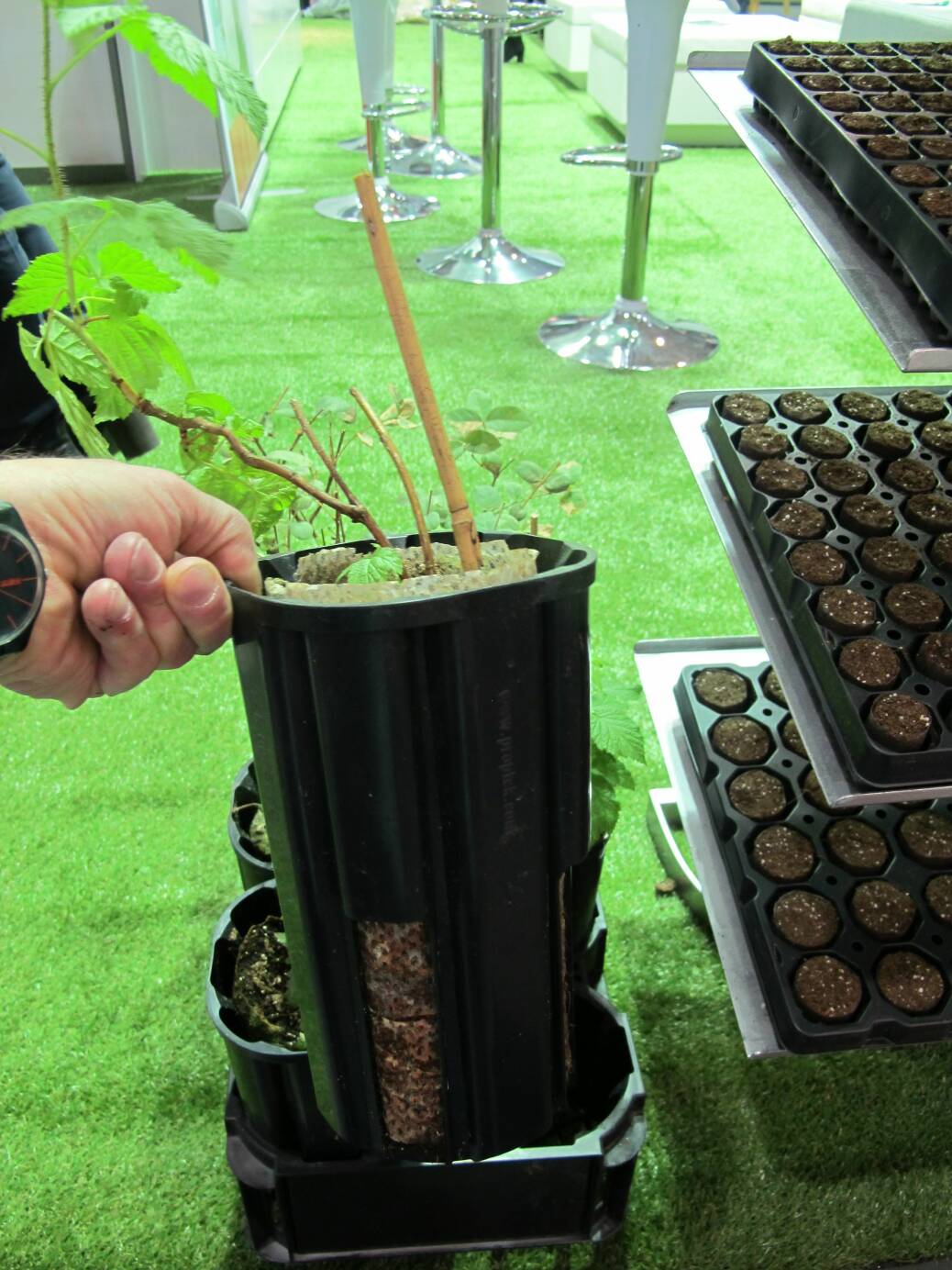

An effective and sustainable alternative to manual weeding
Weeding container plants is labor-intensive manual work, made difficult by staff shortages and high costs. Herbicides are no option either, as there are few registered for ornamental material, and their use is negatively perceived: customers pay close attention to the way the plants they bring into their homes and gardens have been produced. New, sustainable ways of mulching may be the answer.
Wojciech Górka,
trendwatcher in the nursery business
French nursery Laforet produces young plants, and I saw that the mulch consisted of crushed Miscanthus stalks, buckwheat hulls, and rice husks. Their small size makes them perfect for production in small containers. From what I heard, a layer of just a few milimeters is sufficient and lasts longer than traditional bark
Prevention is better than cure
A few years ago, felt and coconut disks appeared on the market. Putting these disks on the pots limits the access of light to the substrate, thus making it hard or impossible for weeds to germinate. The disks allow the flow of water and air, but they must still be applied by hand.
Mulching with shredded bark plays a comparable role. This is already a fully automated daily practice in nursery production. However, since pine bark is becoming increasingly expensive and more difficult to obtain, growers look to new materials. Waste from agricultural production comes into play, e.g. rice chaff, buckwheat hulls, sunflower seed shells, as well as straw-based granules or shredded Miscanthus stalks.
Higher efficiency,
lower costs
A similar opinion is voiced by Michał Stuchlik from Ceres International: “In 2021, we launched SAN TOP, a mulch based on buckwheat hulls mixed with ecological glue. A 5-6mm layer effectively protects against the development of weeds. A thinner layer, applied by a machine, means even higher efficiency and lower mulch costs per plant. For example, 1 m3 of SAN TOP can effectively cover about 20,500 pots P9! Watering activates the glue, which sticks the scales together, turning them into a kind of egg shell covering the pot. This shell cannot blow away or spill out of the pot, but it is permeable to water and air.”
Depending on availability, we will see different materials being used in different parts of the world. In the USA, for example, where hazelnuts are commonly grown, crushed hazelnut shells are used as mulch.

SCROLL DOWN

A thin layer of SAN TOP can be applied by a machine at even higher efficiency and lower mulch costs per plant
Autonomous growing could shape the future of horticulture
The application of advanced technologies, such as robotics, artificial intelligence (AI), and sensor networks, has the potential to revolutionize cultivation practices and shape the future of nurseries. The ornamental greenhouse sector is witnessing a transformative shift with the rise of autonomous growing techniques.
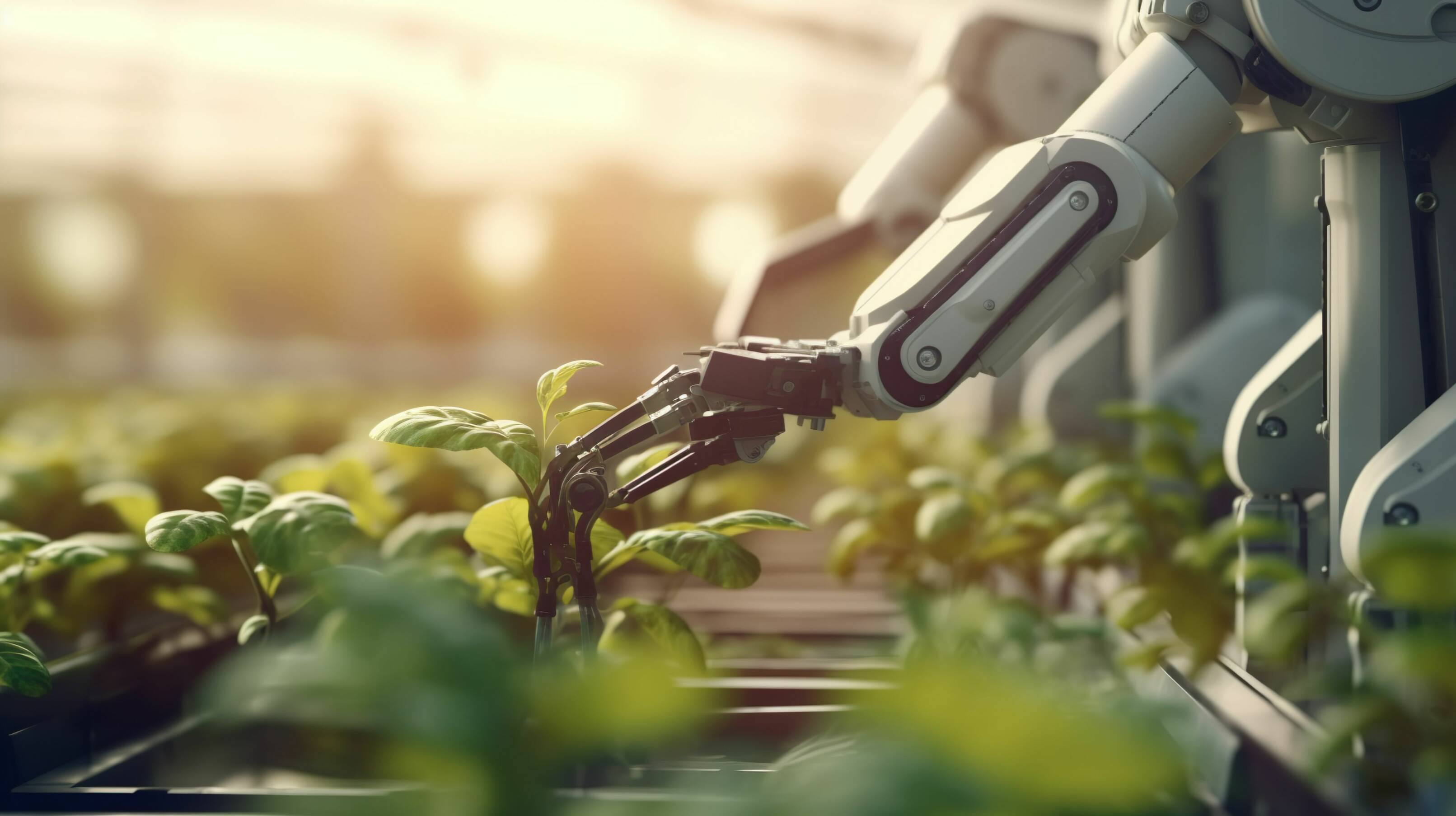
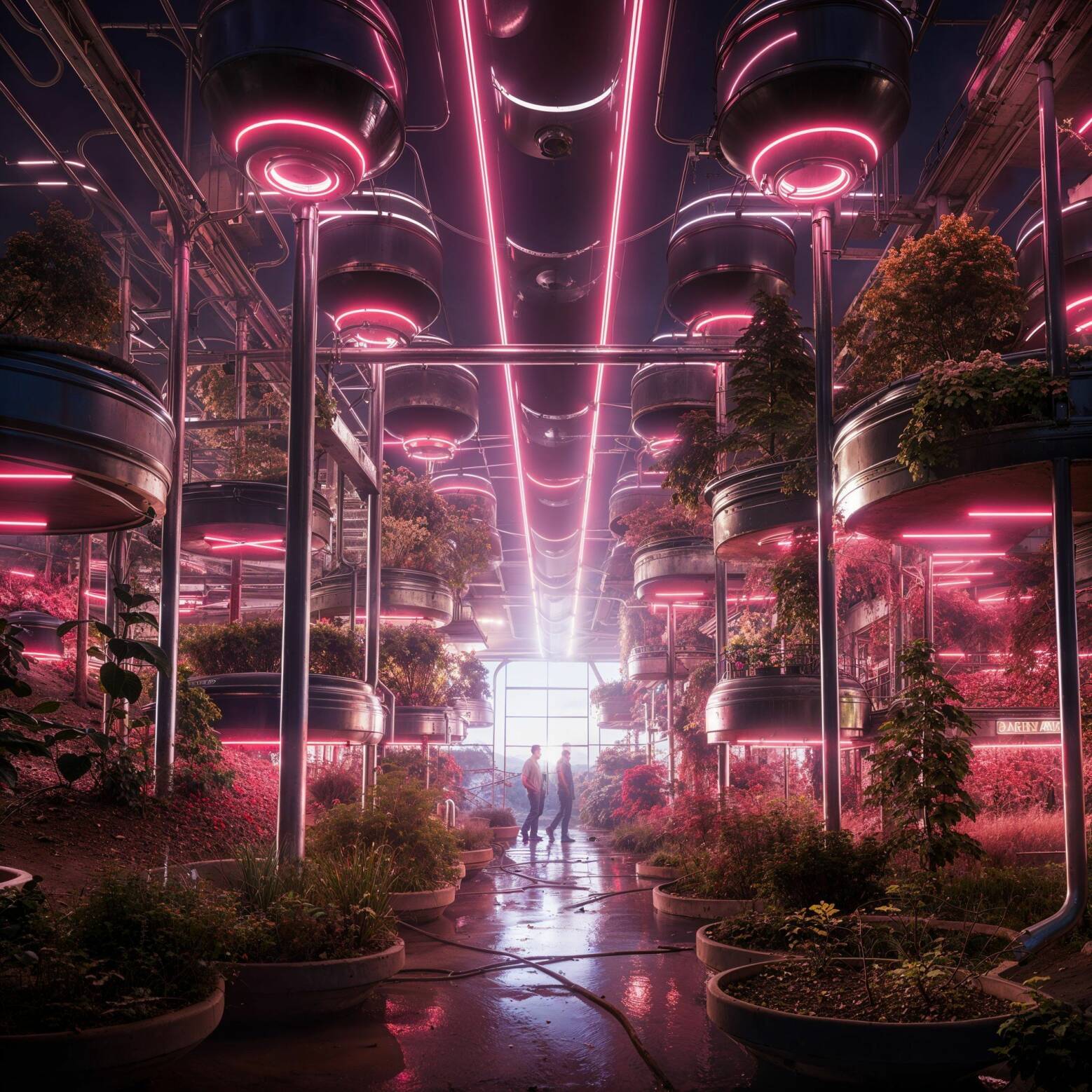
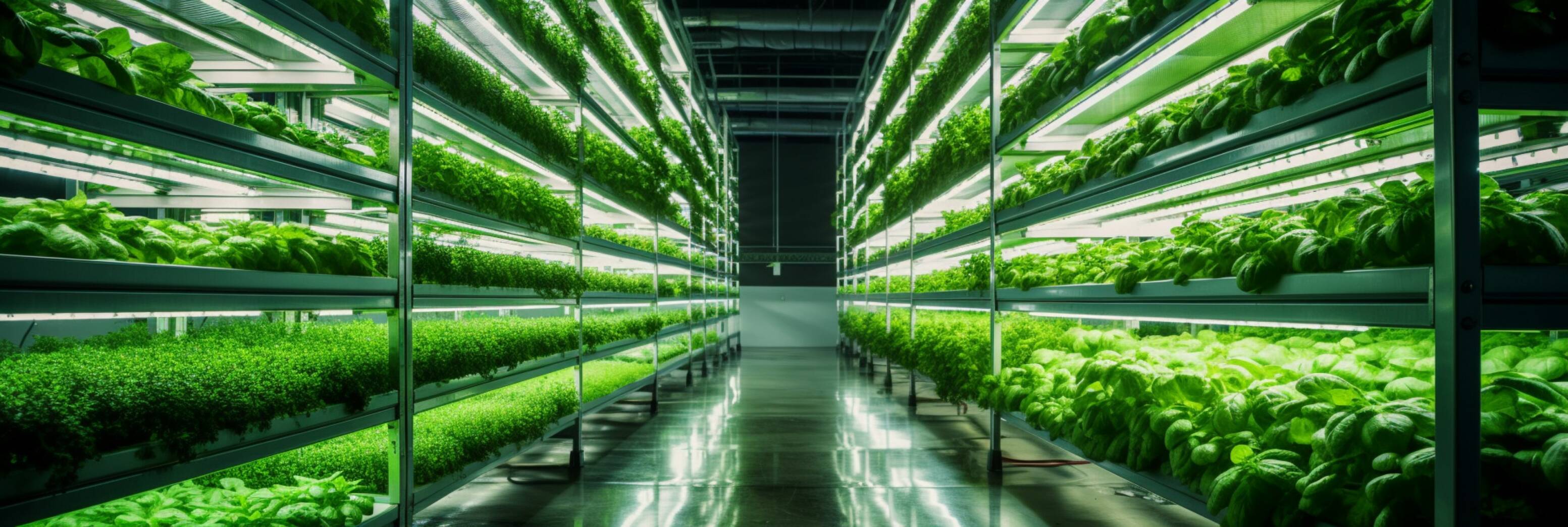
Growing crops without human intervention
Autonomous growing means the automation of key cultivation processes to grow crops without human intervention. Research and development of these technologies in recent years has focused on greenhouse vegetable crops, especially tomatoes, driven by the rising demand for fresh food worldwide.
Greenhouse horticulture leads the way
While the ornamental sector is in the initial phase of developing sensing and automation technologies, we can already see the possibilities of autonomous growing in greenhouse vegetables. Environmental control systems optimize temperature, humidity, lighting, and CO2 levels to create the ideal growing conditions. Precise irrigation and nutrient management systems deliver tailored solutions, while robotics and automation perform tasks like planting, pruning, and harvesting. Data monitoring and analysis enable real-time plant health assessment, disease detection, and predictive insights for optimized cultivation.
AI to optimize cultivation plan
The adoption of autonomous growing techniques in greenhouse vegetable cultivation shows clear benefits. It enhances resource use efficiency, reduces labor costs, and improves crop quality and consistency. Growers using autonomous growing systems also report higher productivity, better mitigation of disease risks, and optimized resource allocation. Furthermore, the integration of AI and IoT technologies enables remote monitoring and management, enhancing operational flexibility and scalability.
More R&D required for ornamental crops
Autonomous growing may be gaining momentum, but challenges remain plentiful. The diversity and complexity of ornamental crops require customized solutions, making further research and development necessary. Additionally, market demand and economic factors influence the pace of innovation. However, as technology advances and industry interest grows, we can expect tailored autonomous systems specifically designed for ornamental crops, fostering sustainable and efficient cultivation practices.
In greenhouse vegetables,
AI is already used to autonomously control the greenhouse installations to realize the cultivation plan set by the grower
Are you listening
to your plants?
Swiss company Vivent's biosensors measure 24/7, real-time biosignals in the plant. Artificial Intelligence (AI) translates this into practical information: growers get instant insight into the plant response to cultivation strategies and treatments. Is the plant out of balance? Then growers receive a notification on their laptop or smartphone, so they can look for the cause and take the right measures to optimize their crop. Faster and more efficiently than is currently possible.

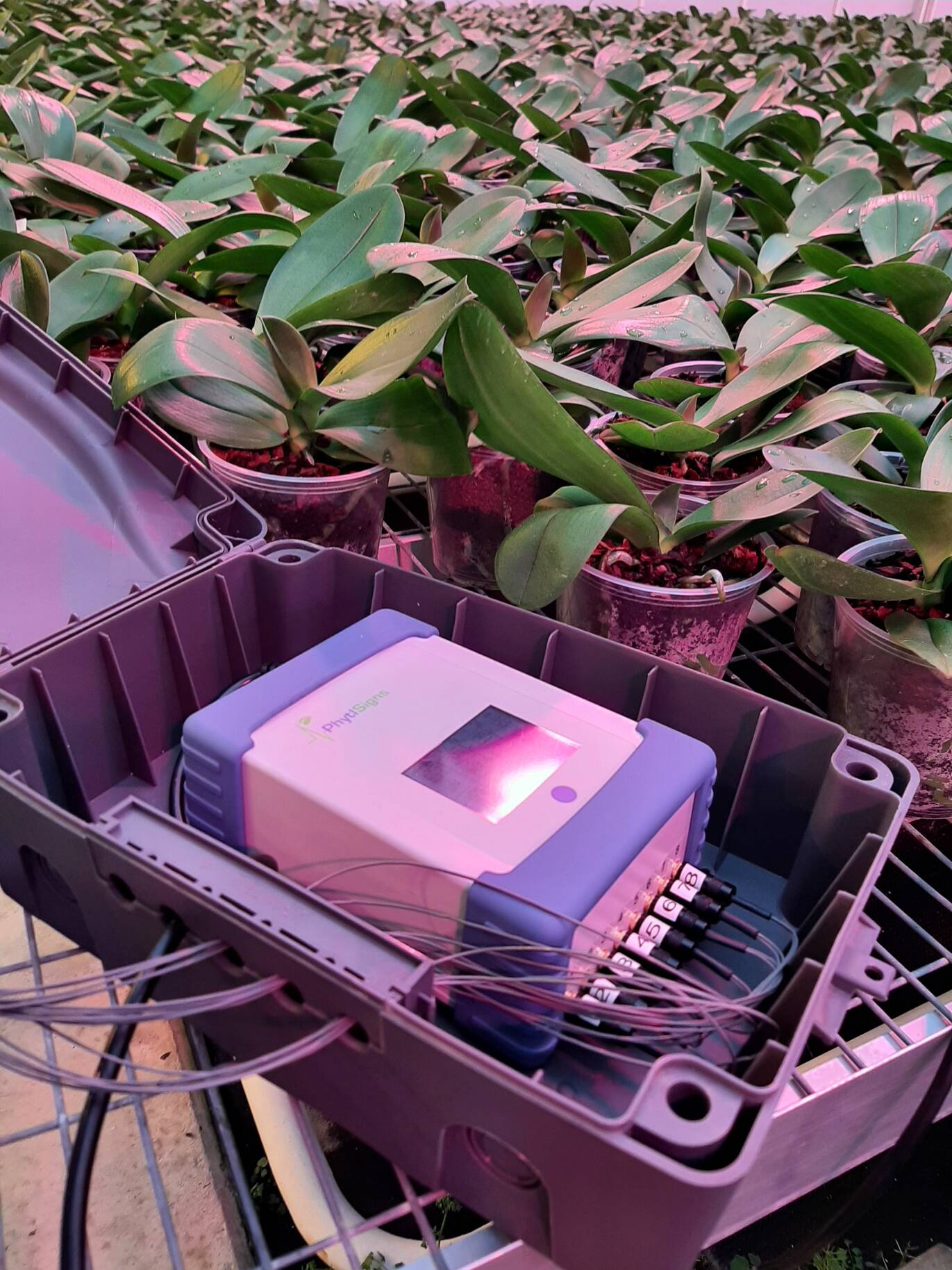
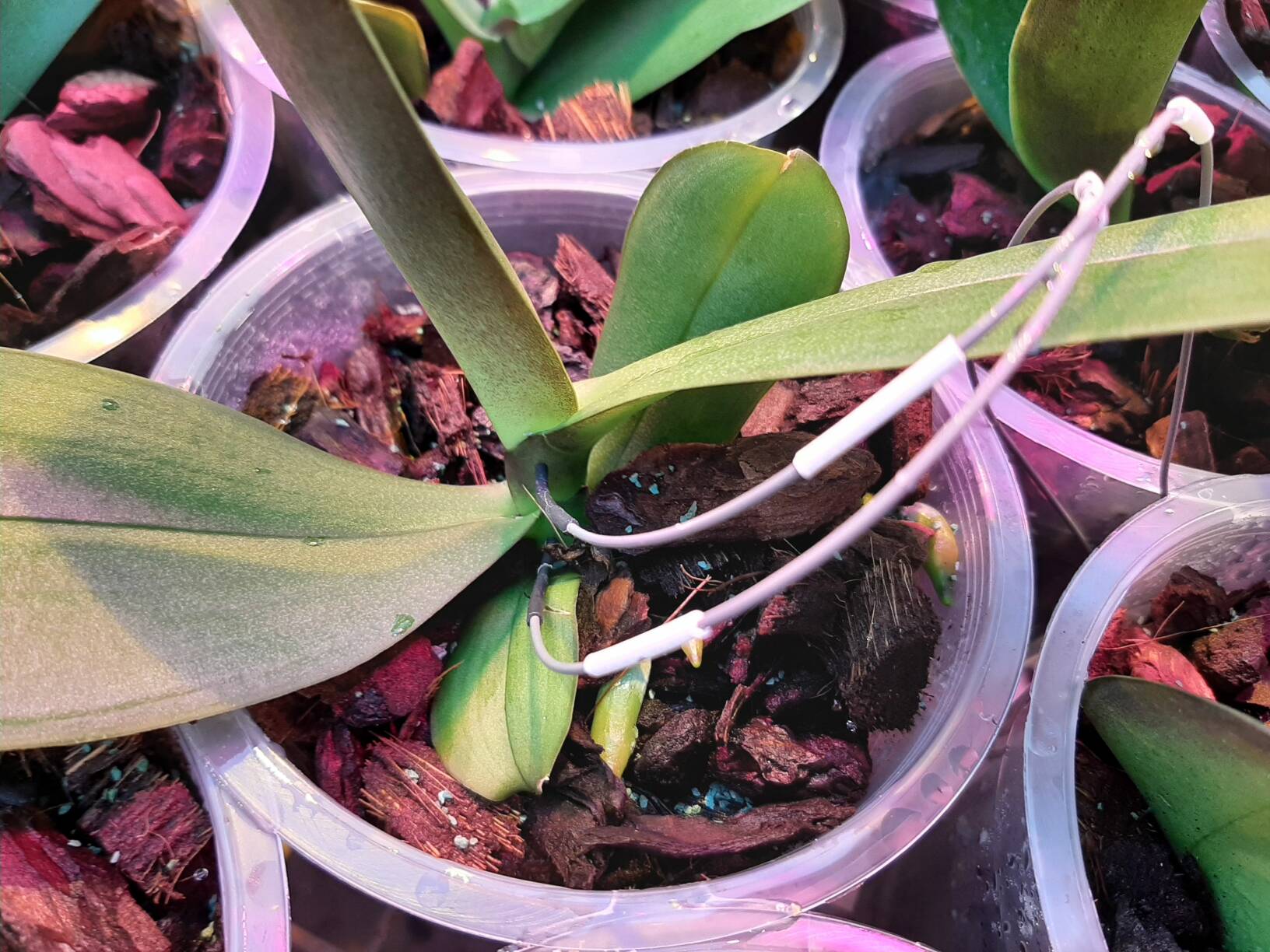
The missing link for autonomous growing
"We are in the early stages of the technology, but this could be the missing link for autonomous growing," says Carl Rentes, commercial director at Vivent. "Horticulture is advanced in observing and measuring what happens around the plant: think cameras and sensors that control the climate in a greenhouse, light, humidity, temperature, and Co2. What we are doing now is disclosing information from inside the plant. This gives us a whole set of valuable data that wasn't available before."
Plants communicate
Plant cells communicate with each other among other things via electrophysical signals, like an electrocardiogram. Those biosignals can be picked up with biosensors. Each signal has its own stimulus, such as climatic conditions, diseases or nutrient deficiencies. By removing a nutrient in a controlled way, for example, AI can detect the unique biosignal that indicates the plant is experiencing a deficiency of that nutrient.
Algorithms for drought stress and nutrient deficiencies
Vivent is using its growing collection of plant-related electrophysical data and machine learning technology to pinpoint the specific situations with increasing accuracy. The company has already developed algorithms for detecting drought stress and nutrient deficiencies. They are currently conducting trials in Phalaenopsis, Hydrangeas, Bromeliads and potted lilies.
"The beauty is that biosignals are fairly identical, so once you recognize the signals and have trained the algorithm in Phalaenopsis, a simple calibration is all you need to train the model for Hortensias, for example," Rentes said.
AI can detect the unique biosignal that indicates a plant is experiencing a deficiency







previous

next

subscribe to our newsletter

Navigation menu
Repotting... without actually repotting?
4
Automation and robotization are irreversible trends
5
Increasing market demands
According to Górka's observations, ornamental nurseries are currently facing enormous challenges mainly driven by increasing production costs. “Access to water resources, subject to stringent regulations, has become increasingly difficult and expensive. Fertilizers and substrates have also seen a rise in prices. Moreover, consumers, from regions like Great Britain and Scandinavia, now prefer plants that are not produced in peat due to its controversial acquisition,” says Górka. Customers are also increasingly aware of the environmental impact of plastics used in container plant production. The availability of plant protection products for ornamental nurseries has drastically decreased while the expectation for environmentally friendly processes and production methods that preserve natural ecosystems and pollinator populations has only risen further.
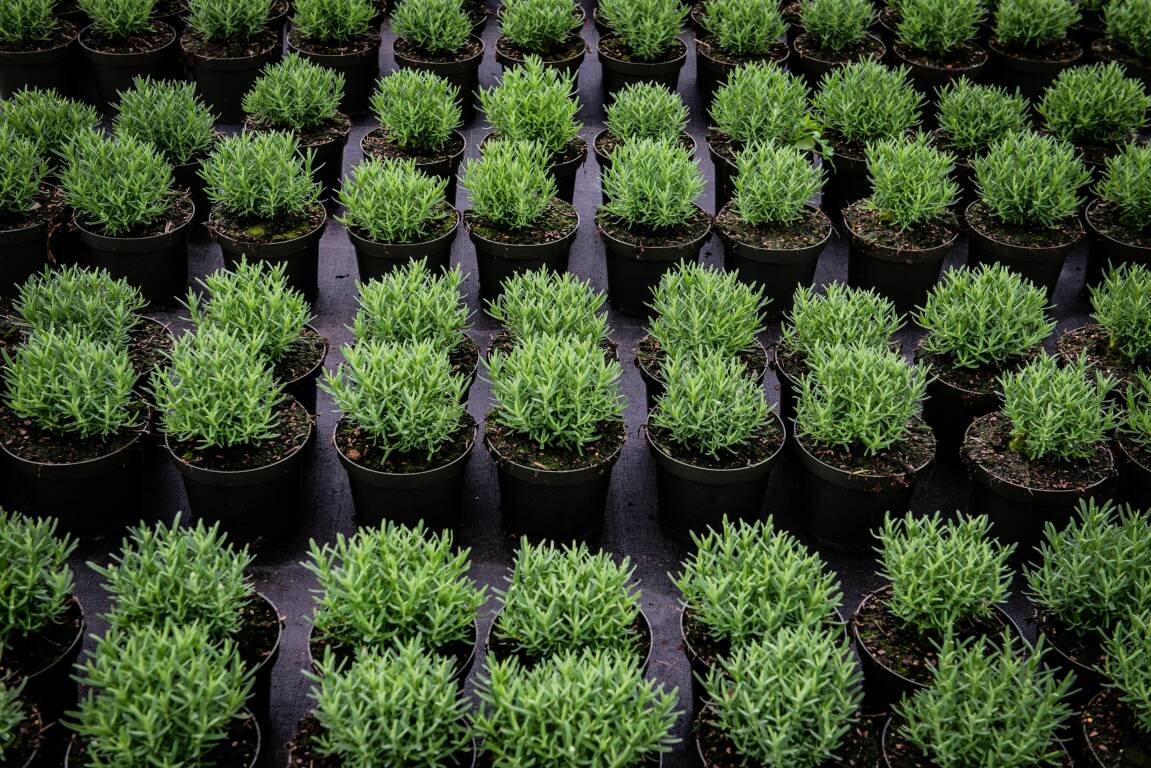
Variety is a challenge to automation
Access to modern machinery that reduces the reliance on human labor is often constrained by the financial resources of nurserymen and the degree of specialization of their business. “While automation may be easy for nurseries supplying large batches of homogeneous products in several container types, it poses greater challenges for smaller farms that focus on a wide range of taxa, but produce smaller quantities,” explains Górka. Some activities that have already been ‘robotized’ in other agricultural sectors, such as vegetable or fruit growing, still rely on human work and experience in ornamental nurseries. Typical examples include grafting or budding, which have been mechanized for crops like tomatoes and vineyards, but are yet to be automated for maples, rhododendrons, or avenue trees.
Human expertise remains invaluable
“I am convinced that there is no turning back from automation and robotization in nurseries. However, given the nature of nursery production, many of its sectors are unlikely to transform quickly into 24/7 plant factories. That is why I, and many other specialists, believe that experienced and dedicated employees will continue to be one of the most valuable assets for companies in the nursery industry,” Górka concludes.
That is why I, and many other specialists, believe that experienced and dedicated employees will continue to be one of the most valuable assets for companies in the nursery industry
With a keen interest in all aspects of nursery work, ranging from machines and technologies to plant protection and new varieties, Górka is a renowned author and editor for magazines such as "Hasło Ogrodnicze," "Informator Sadowniczy," "Szkółkarstwo," and "European Fruit Magazine." He is also a member of the jury for press prizes awarded during the Plantarium and GrootGroen Plus exhibitions. Górka's extensive experience and personal acquaintance with leading European and American nurserymen, combined with his visits to nurseries, botanical gardens, and arboreta, have solidified his expertise in the field. In his free time, he tends to his own garden.
Will robots replace humans?
The biggest challenge in recent years has probably been the escalating cost of labor and the growing difficulty in securing a skilled workforce. Fewer people want to work in the horticulture sector, as they are reluctant to face the unpredictable weather and work in tough conditions. Górka observes: “As a consequence, the popularity of technologies that replace human labor with devices, machines, and even robots seems to be an inevitable step in the coming years. Contrary to popular belief, robots in nurseries are not science fiction machines. Companies like Viscon Plant Technology and TTA offer systems for replanting, sorting, trimming, spacing, and internal transport in nurseries.”
About Wojciech Górka
Experienced and dedicated employees will continue to be one of the most valuable assets for companies in the nursery industry

Wojciech Górka, a nurseryman by education and a passionate journalist who has dedicated over 25 years to observing and describing the green business, offers valuable insights into the latest trends in the nursery industry.
Automation and robotization are irreversible trends

Wojciech Górka,
trendwatcher in the nursery business
French nursery Laforet produces young plants, and I saw that the mulch consisted of crushed Miscanthus stalks, buckwheat hulls, and rice husks. Their small size makes them perfect for production in small containers. From what I heard, a layer of just a few milimeters is sufficient and lasts longer than traditional bark

Prevention is better than cure
A few years ago, felt and coconut disks appeared on the market. Putting these disks on the pots limits the access of light to the substrate, thus making it hard or impossible for weeds to germinate. The disks allow the flow of water and air, but they must still be applied by hand.
Mulching with shredded bark plays a comparable role. This is already a fully automated daily practice in nursery production. However, since pine bark is becoming increasingly expensive and more difficult to obtain, growers look to new materials. Waste from agricultural production comes into play, e.g. rice chaff, buckwheat hulls, sunflower seed shells, as well as straw-based granules or shredded Miscanthus stalks.
Higher efficiency,
lower costs
A similar opinion is voiced by Michał Stuchlik from Ceres International: “In 2021, we launched SAN TOP, a mulch based on buckwheat hulls mixed with ecological glue. A 5-6mm layer effectively protects against the development of weeds. A thinner layer, applied by a machine, means even higher efficiency and lower mulch costs per plant. For example, 1 m3 of SAN TOP can effectively cover about 20,500 pots P9! Watering activates the glue, which sticks the scales together, turning them into a kind of egg shell covering the pot. This shell cannot blow away or spill out of the pot, but it is permeable to water and air.”
Depending on availability, we will see different materials being used in different parts of the world. In the USA, for example, where hazelnuts are commonly grown, crushed hazelnut shells are used as mulch.
Successful in many types of ornamental nurseries
The system was originally developed for the needs of orchard nurseries (so that young plants in paper pots could be quickly and safely planted in the ground), and can also be successfully used in ornamental nurseries, e.g. in the production of large public plantings, in plants for afforestation, in material for Christmas tree plantations, or production in P9 containers.
Repotting... without actually repotting?
Shorter production time
The idea for larger paper pots was born over 10 years ago in the USA, as a cooperation of specialists from Michigan-based Blackmore and Danish engineers from the Ellepot company. A system called Jumbo Ellepots was created. The basis is paper pots with a diameter of up to 120 mm, which, together with plants, are placed in special reusable production trays, the so-called Air Tray® (a joint effort between Blackmore-Ellepot USA and Proptek). That name is justified, because the trays provide excellent air supply to the roots. The consequence is the aerial cutting of the growing main roots (root pruning) and intensive formation of second-order roots, i.e. compaction of the root ball, which facilitates the acceptance of plants in a new container or in the ground.

Field trials showed that plants produced in Jumbo Ellepots and Air Tray® reached commercial size
25 procent faster than those grown in traditional containers.
Ecology and economy go hand in hand
Taking inspiration from mini paper pots used for cuttings, creating a paper pot system for larger plants could solve economic and ecological challenges. Paper pots reduce the use of plastic and eliminate the problem of recycling and disposal. The economic benefits are clear: growers can save on labor if there is no need to manually knock plants out of containers before replanting.
Replanting is a labor-intensive task
Transplanting plants into larger containers or into the soil is a time-consuming task that still relies on human sensibility and gentleness. When repotting thousands of plants, this means many man-hours. Although parts of this process can be automated, we are yet to see machines that can safely pull plants out of small containers.
Paper pots reduce the use of plastic and eliminate the problem of recycling and disposal. The economic benefits are clear: growers can save on labor if there is no need to manually knock plants out of containers before replanting.
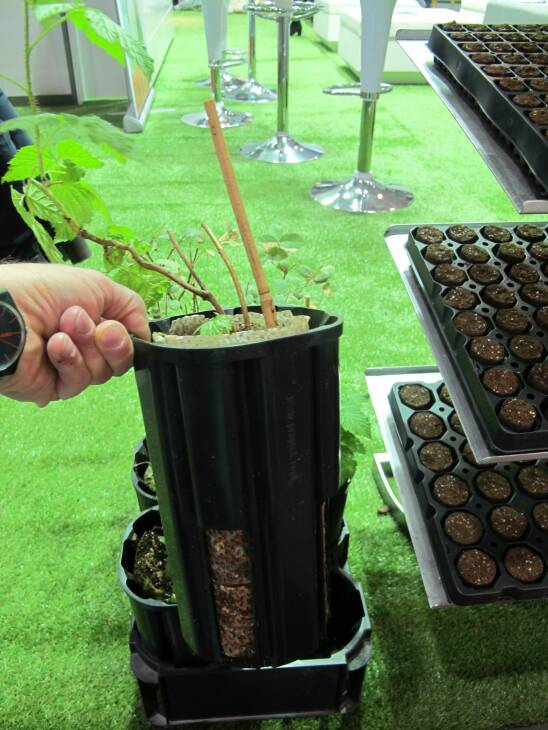
Mini paper pots are already commonly used for cuttings, as they promote rooting and facilitate mechanical planting into larger containers. What if you could create a similar system for larger plants: paper pots that can be transplanted directly into the ground or into a large final-production container?

An effective and sustainable alternative to manual weeding
Weeding container plants is labor-intensive manual work, made difficult by staff shortages and high costs. Herbicides are no option either, as there are few registered for ornamental material, and their use is negatively perceived: customers pay close attention to the way the plants they bring into their homes and gardens have been produced. New, sustainable ways of mulching may be the answer.
A thin layer of SAN TOP can be applied by a machine at even higher efficiency and lower mulch costs per plant
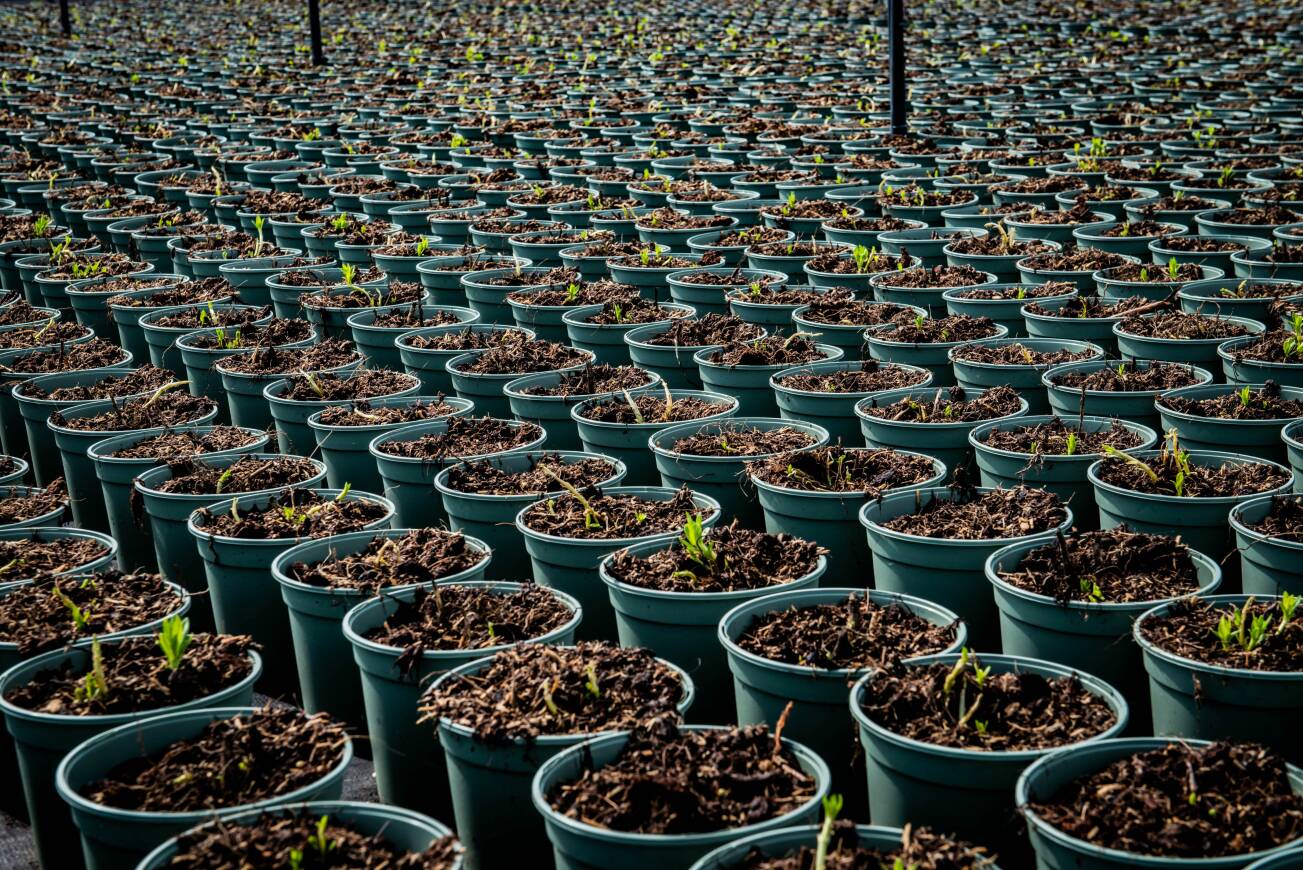

Algorithms for drought stress and nutrient deficiencies
Vivent is using its growing collection of plant-related electrophysical data and machine learning technology to pinpoint the specific situations with increasing accuracy. The company has already developed algorithms for detecting drought stress and nutrient deficiencies. They are currently conducting trials in Phalaenopsis, Hydrangeas, Bromeliads and potted lilies.
"The beauty is that biosignals are fairly identical, so once you recognize the signals and have trained the algorithm in Phalaenopsis, a simple calibration is all you need to train the model for Hortensias, for example," Rentes said.
Plants communicate

Plant cells communicate with each other among other things via electrophysical signals, like an electrocardiogram. Those biosignals can be picked up with biosensors. Each signal has its own stimulus, such as climatic conditions, diseases or nutrient deficiencies. By removing a nutrient in a controlled way, for example, AI can detect the unique biosignal that indicates the plant is experiencing a deficiency of that nutrient.
The missing link for autonomous growing
AI can detect the unique biosignal that indicates a plant is experiencing a deficiency
"We are in the early stages of the technology, but this could be the missing link for autonomous growing," says Carl Rentes, commercial director at Vivent. "Horticulture is advanced in observing and measuring what happens around the plant: think cameras and sensors that control the climate in a greenhouse, light, humidity, temperature, and Co2. What we are doing now is disclosing information from inside the plant. This gives us a whole set of valuable data that wasn't available before."
More R&D required for ornamental crops
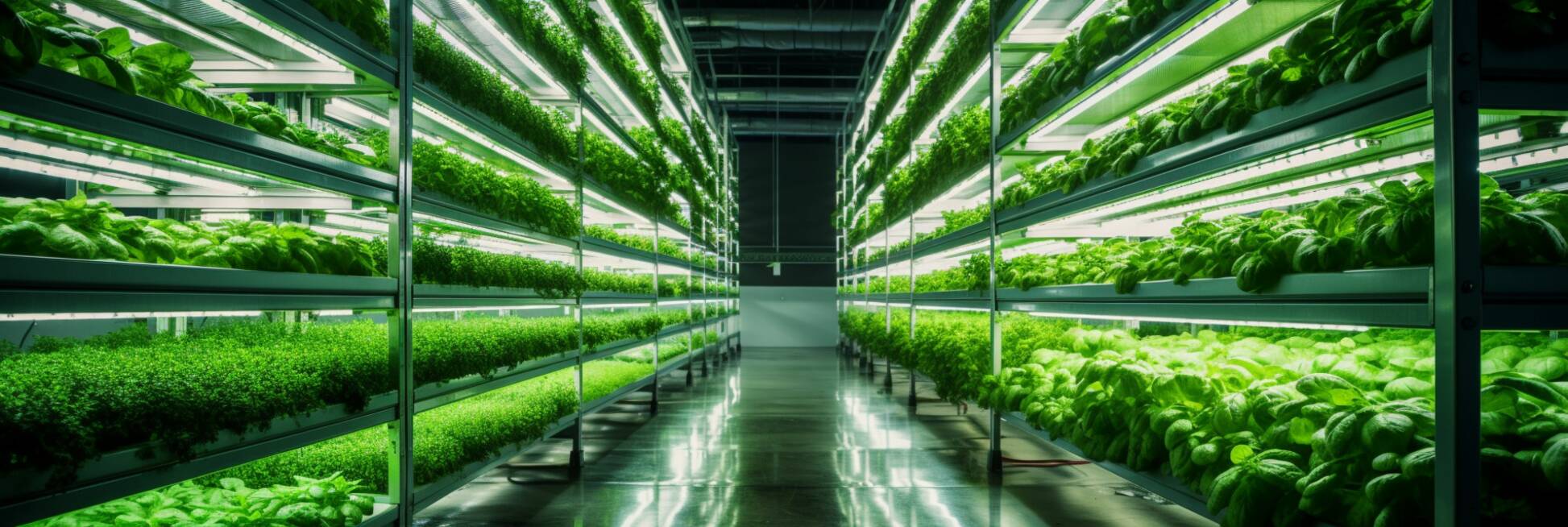
Autonomous growing may be gaining momentum, but challenges remain plentiful. The diversity and complexity of ornamental crops require customized solutions, making further research and development necessary. Additionally, market demand and economic factors influence the pace of innovation. However, as technology advances and industry interest grows, we can expect tailored autonomous systems specifically designed for ornamental crops, fostering sustainable and efficient cultivation practices.
AI to optimize cultivation plan
The adoption of autonomous growing techniques in greenhouse vegetable cultivation shows clear benefits. It enhances resource use efficiency, reduces labor costs, and improves crop quality and consistency. Growers using autonomous growing systems also report higher productivity, better mitigation of disease risks, and optimized resource allocation. Furthermore, the integration of AI and IoT technologies enables remote monitoring and management, enhancing operational flexibility and scalability.
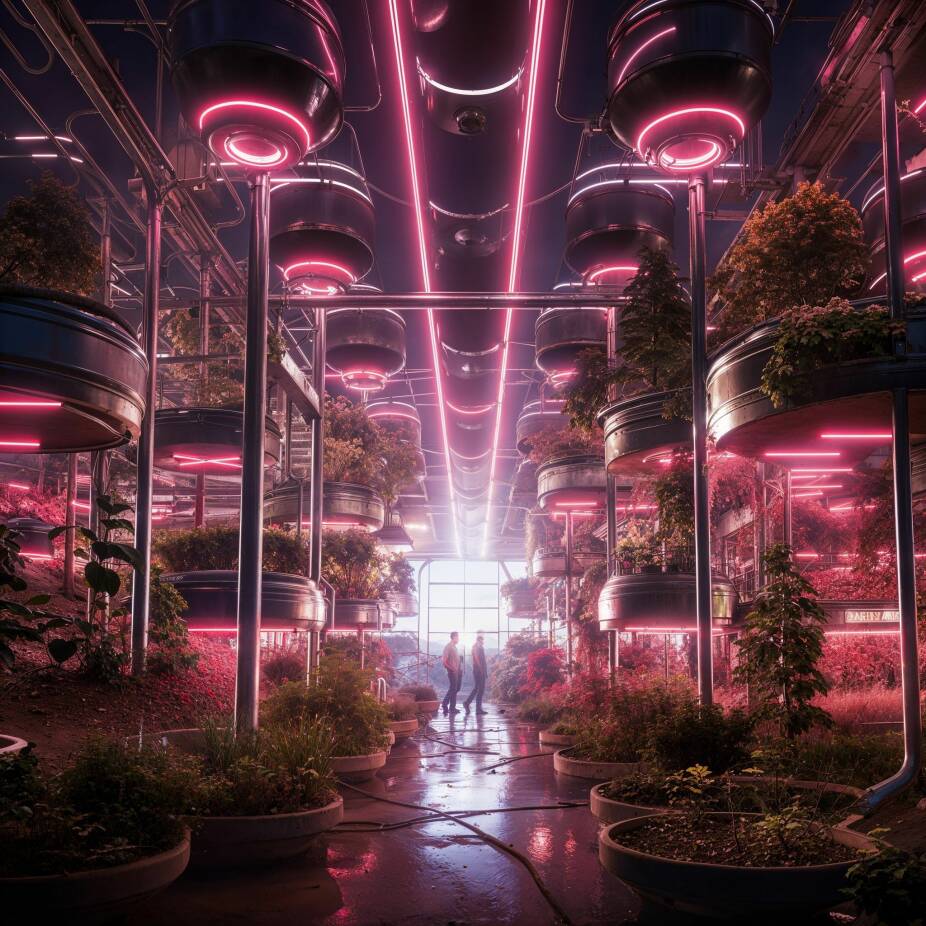
Growing crops without human intervention
Greenhouse horticulture leads the way
While the ornamental sector is in the initial phase of developing sensing and automation technologies, we can already see the possibilities of autonomous growing in greenhouse vegetables. Environmental control systems optimize temperature, humidity, lighting, and CO2 levels to create the ideal growing conditions. Precise irrigation and nutrient management systems deliver tailored solutions, while robotics and automation perform tasks like planting, pruning, and harvesting. Data monitoring and analysis enable real-time plant health assessment, disease detection, and predictive insights for optimized cultivation.
In greenhouse vegetables,
AI is already used to autonomously control the greenhouse installations to realize the cultivation plan set by the grower
Autonomous growing means the automation of key cultivation processes to grow crops without human intervention. Research and development of these technologies in recent years has focused on greenhouse vegetable crops, especially tomatoes, driven by the rising demand for fresh food worldwide.
Are you listening
to your plants?

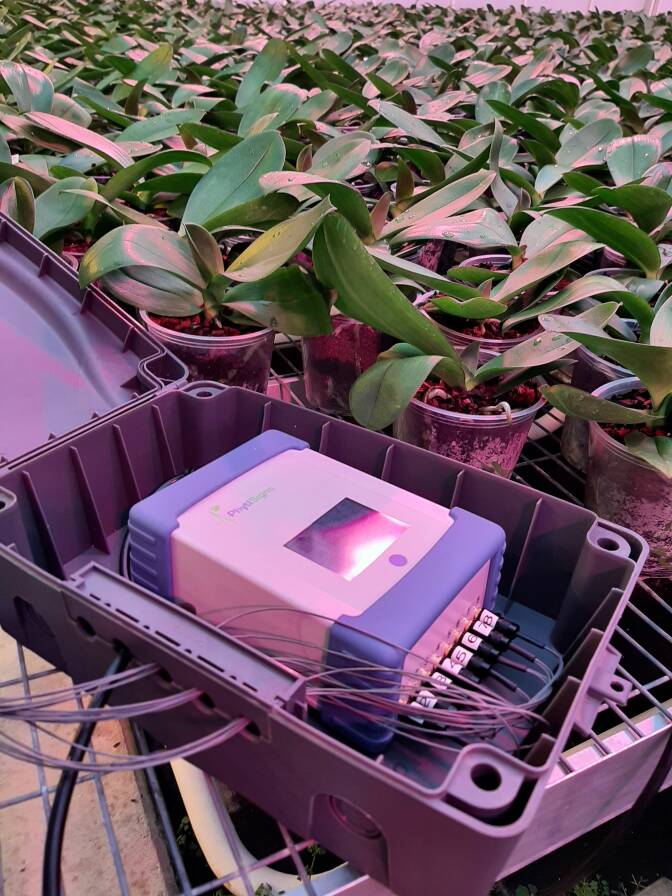
Swiss company Vivent's biosensors measure 24/7, real-time biosignals in the plant. Artificial Intelligence (AI) translates this into practical information: growers get instant insight into the plant response to cultivation strategies and treatments. Is the plant out of balance? Then growers receive a notification on their laptop or smartphone, so they can look for the cause and take the right measures to optimize their crop. Faster and more efficiently than is currently possible.
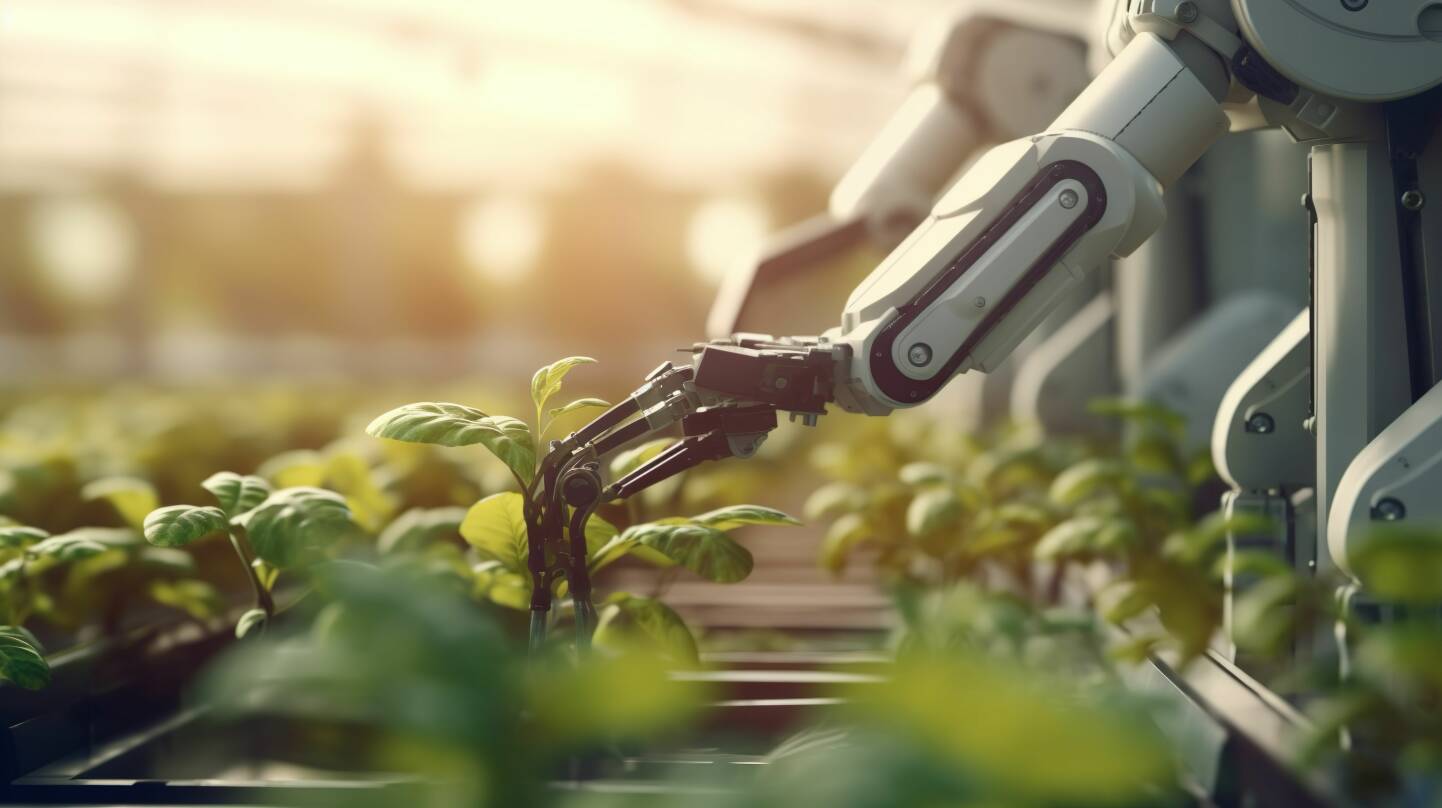
Autonomous growing could shape the future of horticulture
The application of advanced technologies, such as robotics, artificial intelligence (AI), and sensor networks, has the potential to revolutionize cultivation practices and shape the future of nurseries. The ornamental greenhouse sector is witnessing a transformative shift with the rise of autonomous growing techniques.


An effective and sustainable alternative to manual weeding
3
Autonomous growing could shape the future of horticulture
2
The future at your doorstep
Are you listening
to your plants?
1
In this article we explore promising high-tech developments like biosensors and autonomous growing, as well as down-to-earth, sustainable options that can help take your nursery into the future, today.
Technology will continue to reshape the way plants are grown: today’s experts agree that automation and robotization are irreversible trends. Whilst these potentially game-changing technologies are indeed on the rise, there are also less futuristic solutions available that can make a positive impact on your business and the environment.
Technology and innovation are inherent to cultivation. The past decades saw the widespread adoption of revolutionary solutions, such as potting machines, mechanized greenhouse climate systems, controlled-release fertilizers, and precision irrigation systems.
High-tech and down-to-earth developments to take your nursery into the future today